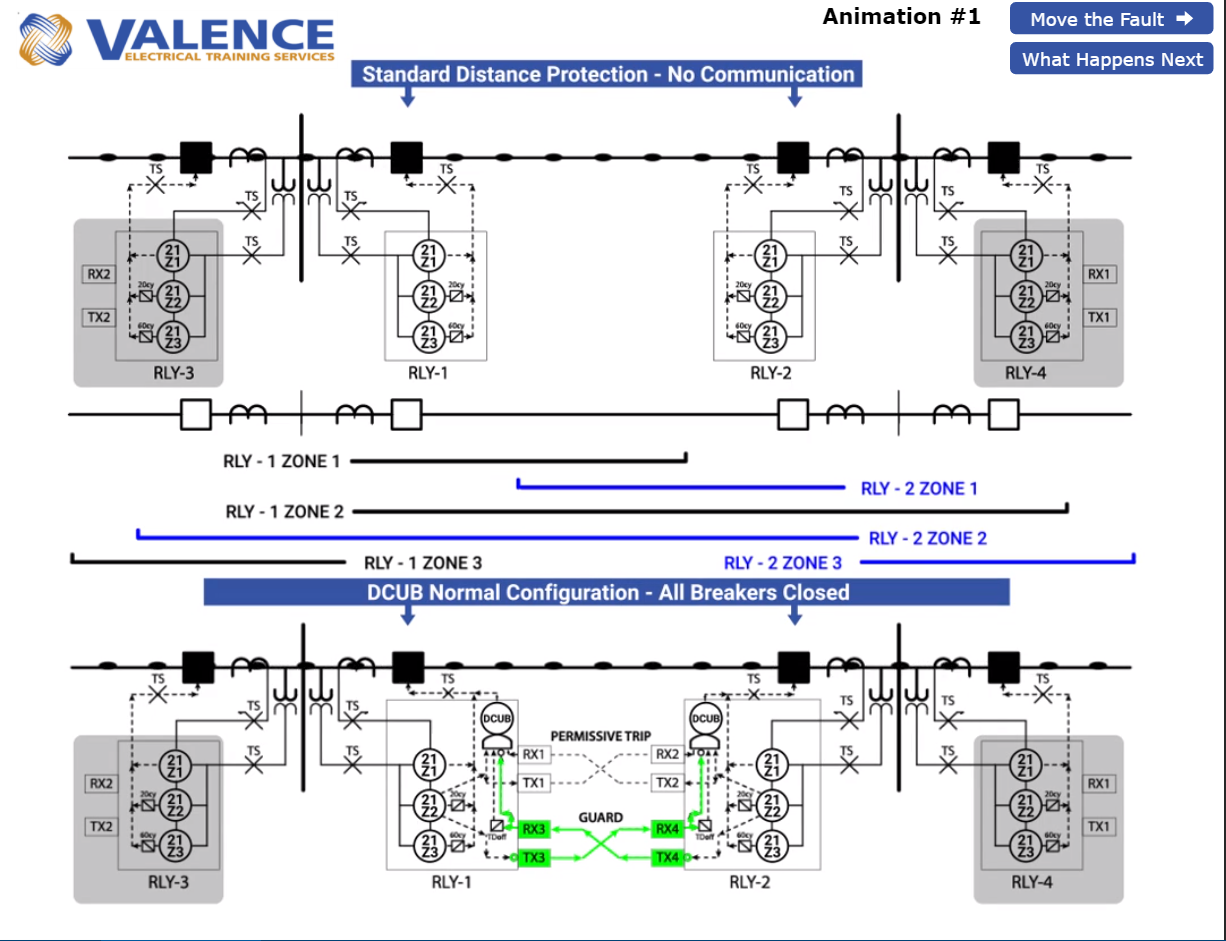No products in the cart.
Can You Predict What Happens in a Directional Comparison Unblocking (DCUB) Scheme?
The Relay Testing Handbook: End-to-End Testing covers the most common Communication-Assisted Protection Schemes including the Directional Comparison Unblocking (DCUB) Scheme. This bonus animation shows the steps involved for a DCUB trip.
End-to-end testers should understand how this scheme operates before they test it and this animation was created to help relay testers understand distance relay principles.
See if you can accurately predict what will happen at different fault locations with a Directional Comparison Unblocking (DCUB) Scheme.
Click on the image below to start the animation. Press “What happens Next” to move through the animation. Press “Move the Fault” to change the fault location.

Did you like this post?
You can share it with these links:
Read More Articles:
Can You Predict What Happens in a Permissive Under-Reaching Transfer Trip (PUTT) Scheme?

Dear Sirs,
please i need description about the FORWARD&BACKWARD direction protection and what are the values of its.
thanks&BR
Thanks for your comment. We’ve covered directionality in relays several times on the blog at
https://relaytraining.com/finding-directional-overcurrent/
and
https://relaytraining.com/testing-directional-overcurrent-relays/
and
https://relaytraining.com/?s=direction
which scheme is widely used- POTT or DCUB
DCUB is used when a guard signal is necessary (such as wavetraps communicating across the transmission line itself). POTT schemes are used with more robust communication channels (Fibre, etc.)
thank you for replying,
Pls explain me Mutual compensation on Line -elaborately ?
Hi Chris,
I don’t see animation working when ‘Move the fault’ tab is activated i.e., for faults external to the line.
Thanks
Thanks for the comment. Everything seems to be working fine. Only one relay and and one breaker changes in animation #3 and Animation #4.